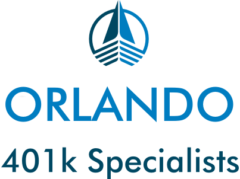A one-participant 401(k) plan is sometimes called a:
- Solo 401(k)
- Solo-k
- Uni-k
- One-participant k
The one-participant 401(k) plan isn’t a new type of 401(k) plan. It’s a traditional 401(k) plan covering a business owner with no employees, or that person and his or her spouse. These plans have the same rules and requirements as any other 401(k) plan.
Contribution limits in a one-participant 401(k) plan
The business owner wears two hats in a 401(k) plan: employee and employer. Contributions can be made to the plan in both capacities. The owner can contribute both:
- Elective deferrals up to 100% of compensation (“earned income” in the case of a self-employed individual) up to the annual contribution limit:
- $18,000 in 2015 and 2016, or $24,000 in 2015 and 2016 if age 50 or over; plus
- Employer nonelective contributions up to:
- 25% of compensation as defined by the plan, or
- for self-employed individuals, see discussion below
If you’ve exceeded the limit for elective deferrals in your 401(k) plan, find out how to correct this mistake.
Total contributions to a participant’s account, not counting catch-up contributions for those age 50 and over, cannot exceed $53,000 for 2015 and 2016.
Example: Ben, age 51, earned $50,000 in W-2 wages from his S Corporation in 2015. He deferred $18,000 in regular elective deferrals plus $6,000 in catch-up contributions to the 401(k) plan. His business contributed 25% of his compensation to the plan, $12,500. Total contributions to the plan for 2015 were $36,500. This is the maximum that can be contributed to the plan for Ben for 2015.
A business owner who is also employed by a second company and participating in its 401(k) plan should bear in mind that his limits on elective deferrals are by person, not by plan. He must consider the limit for all elective deferrals he makes during a year.
Contribution limits for self-employed individuals
You must make a special computation to figure the maximum amount of elective deferrals and nonelective contributions you can make for yourself. When figuring the contribution, compensation is your “earned income,” which is defined as net earnings from self-employment after deducting both:
- one-half of your self-employment tax, and
- contributions for yourself.
Use the rate table or worksheets in Chapter 5 of IRS Publication 560, “Retirement Plans for Small Business,” for figuring your allowable contribution rate and tax deduction for your 401(k) plan contributions. See also Calculating Your Own Retirement Plan Contribution.
Testing in a one-participant 401(k) plan
A business owner with no common-law employees doesn’t need to perform nondiscrimination testing for the plan, since there are no employees who could have received disparate benefits.
The no-testing advantage vanishes if the employer hires employees. No matter what the 401(k) plan is called by a plan provider, it must meet the rules of the Internal Revenue Code. If you hire employees and they meet the plan eligibility requirements, you must include them in the plan and their elective deferrals will be subject to nondiscrimination testing (unless the 401(k) plan is a safe harbor plan or other plan exempt from testing).
If you excluded eligible employees from your 401(k) plan, find out how to correct this mistake.
A one-participant 401(k) plan is generally required to file an annual report on Form 5500 -SF if it has $250,000 or more in assets at the end of the year. A one-participant plan with fewer assets may be exempt from the annual filing requirement.
